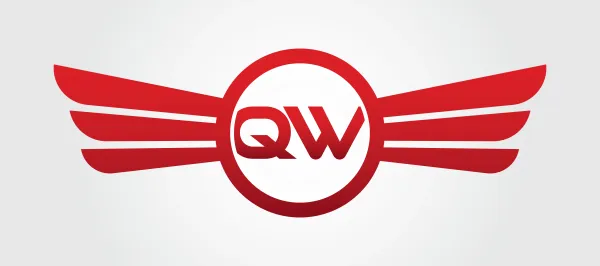Note Descriptor Updates when Coding Observations

Language change ends outpatient confusion on 99217-99220. Coding for observation services can be tricky business. First, you'll have two sets of codes to choose from for the services, and the answer to which codes you use will depend on payer, length of stay, and several other factors that can throw coders off the correct code trail. Further, there's an update to one set of observation codes for 2018 that you'll need to note to stay on top of your game. Use this FAQ to get the lowdown on the observation coding issues that could come knocking at your door. Q: What's new for 2018 in observation coding? A: There's been a change in the descriptors for CPT® codes 99217 (Observation care dischargeday management ...), and 99218 (Initial observation care, per day, for the evaluation and management of a patient which requires these 3 key components: a detailed or comprehensive history; a detailed or comprehensive examination; and medical decision making that is straightforward or of low complexity ...) through 99220 (... a comprehensive history; a comprehensive examination; and medical decision making of high complexity ...). If you report hospital observation codes 99217 and 99218-99220, don't miss this E/M language change. All of the descriptors will add the phrase "outpatient hospital." Revisions: Take a look at the 99217 descriptor in CPT® 2018 (emphasis added): This change also holds true for initial hospital observation care services 99218 (Initial observation care, per day, for the evaluation and management of a patient ... Usually, the problem[s] requiring admission to outpatient hospital "observation status" are of low severity. Typically, 30 minutes are spent at the bedside and on the patient's hospital floor or unit.) through 99220 (... Usually, the problem(s) requiring admission to outpatient hospital "observation status" are of high severity. Typically, 70 minutes are spent at the bedside and on the patient's hospital floor or unit). Impact: According to Suzan Hauptman, MPM, CPC, CEMC, CEDC, AAPC Fellow, senior principal of ACE Med in Pittsburgh, this revision clarifies that providers should perform these services on an outpatient basis, regardless of physical location. Providers can observe a patient in an inpatient setting as well as an outpatient setting; patient status is dependent on the patient's condition. Use these codes whenever the provider admits the patient to observation, regardless of setting. Q: When should you report 99217-99220? A: You'll report these codes "when a patient is admitted and discharged [to observation] on different calendar days," explains Tracey Carl, CCS-P, CEDC, director of coding and education at CompMed in Newport, Kentucky. "Keep in mind that to bill any discharge day code, there must be a face-to-face encounter," warns Jean Acevedo, LHRM, CPC, CHC, CENTC, president and senior consultant with Acevedo Consulting Incorporated in Delray Beach, Florida. "So, the doctor would need to have seen the patient not only on the first date [of observation] ... but also on the date of discharge." Medicare alert: You'll also use 99218-99220 for Medicare payers, and payers that follow Medicare guidelines, when the service lasts less than eight hours on the same calendar date, confirms Carol Pohlig, BSN, RN, CPC, ACS, senior coding and education specialist at the Hospital of the University of Pennsylvania. "We only follow the eight-hour rule for Medicare since their guidelines state that the patient must be in observation for more than eight hours before we can use the admit and discharge codes 99234-99236," explains Carl. "The CPT® guideline does not state that the observation care must be more than eight hours [for 99234-99236]." So, private payers and Medicare might differ on which codes to use for single-day observations that last less than eight hours. If you have any questions about how to properly file these services, check with your third-party payer. Some will follow Medicare's lead; others will not. Q: When should you report 99234-99236? A: "If the patient is admitted to observation care, stays in for more than eight hours, but less than 24 hours, and is discharged on the same calendar date as the admission, the physician may report a code from the range 99234-99236 for admission and discharge on the same day," relays Acevedo. The 99234 (Observation or inpatient hospital care, for the evaluation and management of a patient including admission and discharge on the same date, which requires these 3 key components: a detailed or comprehensive history; a detailed or comprehensive examination; and medical decision making that is straightforward or of low complexity...) through 99236 (... a comprehensive history; a comprehensive examination; and medical decision making of high complexity ...) codes include both the admission and the discharge, so you would not report separate admission and discharge codes for these claims. Tricky spot: As Carl mentioned earlier, CPT® does not have a time component for 99234-99236. Medicare, however, stipulates that these codes are only for single-calendar date observations that last more than eight hours. So only report 99234-99236 for Medicare patients who are in observation for more than eight hours on the same calendar date, and check with your private payers to see how they want you to code stays of less than eight hours. Caveat: Even though you are only submitting a single observation code, the provider will need to include two notes on the encounter form: evidence of a face-to-face visit with the patient upon admission, and another in-person visit prior to discharge. This shows the payer that the provider not only performed the initial observation care; she also returned to evaluate the patient and decide to discharge him.




